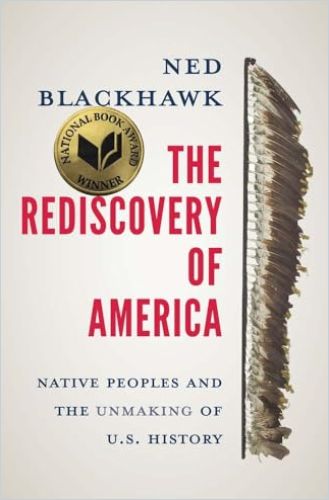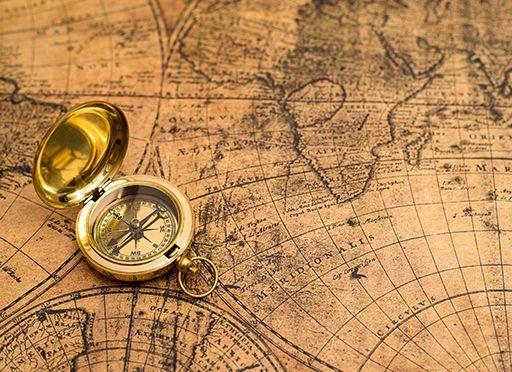Yale professor Ned Blackhawk, a Native American, details the history of Indigenous people in today’s United States before and after the arrival of Europeans.

US History: The Indigenous Story
Yale University History and American Studies professor Ned Blackhawk, a member of the Te-Moak Tribe of the Western Shoshone, details Indigenous people’s contributions to America and depicts their struggles through five centuries of Native and non-Native history. In this 2023 National Book Award nonfiction winner, Blackhawk addresses the violence and dispossession Indigenous people faced and survived as he celebrates their enduring power, spiritual and practical agency, and ability to persevere and succeed.
Indigenous Cultures
The subjugation and near extermination of America’s native population obscure the significant impact Indigenous people had on founding and building the nation. Failure to teach about that impact is a fundamental flaw in American history texts and education.
Native political alliances, trade networks, and cultural practices exemplified the richness of Indigenous societies prior to the arrival of Europeans. Millions of Indigenous peoples lived across South and Central America and in the American Southwest and Northeast. About 150,000 Native Americans lived from Maine to Massachusetts. The Iroquois Confederacy united the Mohawk, Oneida, Onondaga, Cayuga, Seneca, and Tuscarora tribes in New York and eastern Canada in their Great League of Peace, which promoted unity, democratic rule, and conflict resolution.
Across North America, diverse groups of Indigenous people developed economic interdependence. In the US Southwest and Rocky Mountains, the Comanche and Ute tribes rivaled and exceeded European power. Southwest Plains nations, including the Pueblo, resisted Spanish conquest and maintained dominion over their lands even after the United States’ won independence from Britain.
Across multiple military theaters and within countless political discourses, Native peoples shaped the origins of the Revolution.Ned Blackhawk
Native American adaptive strategies included participating in European trade, partially adopting European religions, and forming wartime alliances with some European powers against other Europeans or other tribes. Despite some successes, these tactics led to the deaths or capture and enslavement of millions of Native Americans by Europeans and, in some cases, by each other.
In 1763, the Odawa leader Pontiac attempted to unite Indigenous Nations and French settlers to push the British out of the Great Lakes region. This effort, known as Pontiac’s War, underscored Indigenous dissatisfaction and forced the British to recognize the need to cooperate with Native peoples.
After the Revolutionary War
After the American Revolution and US Independence in 1783, European settlers pushed westward. To support their westward movement, the US Constitution was changed in 1787 to give the federal government control of Native American affairs, commerce, treaties, and war.
The theory of Manifest Destiny, which argued that white Americans were destined to expand across the continent, fueled extended settlement, which meant encroachment and confiscation of Indigenous-owned lands. The 1795 Treaty of Greenville, signed by George Washington, forced northwest Native Americans to cede land and restricted them to living on reservations.
After the Revolution, Indigenous dispossession facilitated the growth of white male democracy and African American slavery.Ned Blackhawk
The Indian Removal Act of 1830, signed by President Andrew Jackson, forced thousands of Indigenous peoples — including the Cherokee, Choctaw, and Creek — to leave their ancestral lands in Georgia and throughout the Southeast and travel to inhospitable, unknown territories west of the Mississippi River. Many died on the way or in new lands with an alien climate and geography.
During the Civil War, settlers massacred tens of thousands of Indians. Fighting in Indian Territory (mostly Oklahoma), home to many of the “Five Civilized Tribes,” led to widespread displacement and starvation.
Assimilation
By the late 19th century, the US government shifted from recognizing Native Americans in treaties to pushing them to assimilate. Officials sought to eradicate Indigenous traditions and impose Euro-American norms using a variety of forceful mechanisms, including land allotments, children’s schooling, and religious conversion.
Indians could be hunted, killed, seized, and indentured with impunity. Indian children could also be taken from their families. Native peoples had…‘no rights which the white man is bound to respect’.
Ned Blackhawk
The Dawes Act of 1887 dissolved Native American tribes’ communal land holdings and distributed individual plots to Native families, thereby eroding centuries of communal culture and tradition. Native Americans who accepted land allotments gained US citizenship, but the federal government also sold millions of acres of Indigenous people’s land to settlers.
Government boarding schools forcibly removed Indigenous children from their families and communities. The Carlisle Indian Industrial School, to take one example, emphasized English language instruction, Christianity, and vocational training while suppressing Native languages and customs under the motto: “Kill the Indian and save the man.” Congress criminalized Indigenous religious ceremonies.
Many Indigenous communities maintained their cultural practices in secret, leveraged numerous legal avenues to fight against being dispossessed from their land, and continued to practice traditional communal living, even within the framework of the Dawes Act.
By the early 20th century, the federal government recognized the failures of its assimilation policies. The 1928 Meriam Report criticized the Bureau of Indian Affairs — which oversaw these policies — and recommended reforms that led to the 1934 Indian Reorganization Act, an effort to restore tribal self-governance.
Indigenous Identity
During the 1930s, Native activists catalyzed the Indian New Deal, which promoted tribal self-governance and restoration of treaty rights. However, the 1950s and the Cold War era brought Republican efforts to renew assimilation and “terminate” tribal governments.
By the 1970s, Native American leaders came forward to advocate autonomy and economic self-sufficiency, notably through the management of casino revenues.This led to improvements in the infrastructure of most reservations, though nearly a third of tribal people today still live below the poverty line.
Tribes reversed the most threatening policies of the Cold War era, though few people outside Indian Country understood this historic reversal of fortune, while even fewer grasped the hard-fought gains of the modern sovereignty movement.
Indigenous Americans have adapted to modern challenges while preserving their cultural identity, traditions, and sovereignty. Yet new challenges loom, threatening the hard-won treaty rights Native Americans have reclaimed after centuries of dispossession.
Valuable History
Ned Blackhawk has performed a valuable service. With impressive but accessible scholarly detail, he interweaves Indigenous and non-Indigenous United States’ history to demonstrate how Native Americans shaped the US Revolution, westward expansion, and the Civil War, and have maintained an ongoing impact on US policies ever since. Blackhawk, who is also the author of Violence over the Land: Indians and Empires in the Early American West, details the brutal, shocking, and relentless murder and suppression of Native Americans and their cultures. While portraying this shameful, painful history – and occasionally, like many historians, getting a bit mired in sorting out telling details from complex minutiae – Blackhawk celebrates the courage, political savvy, determination, rootedness, and resilience of Indigenous peoples and their way of life.





